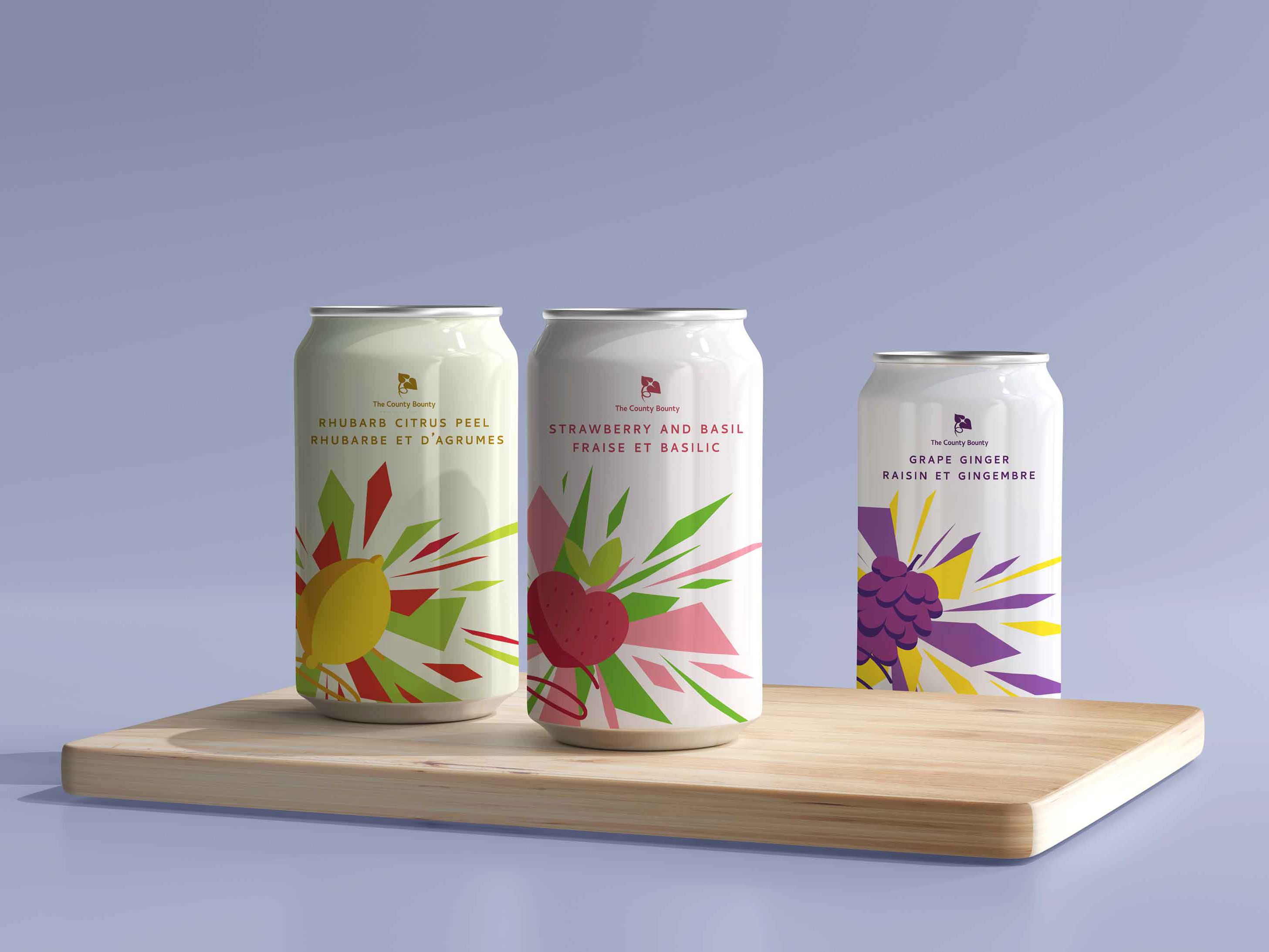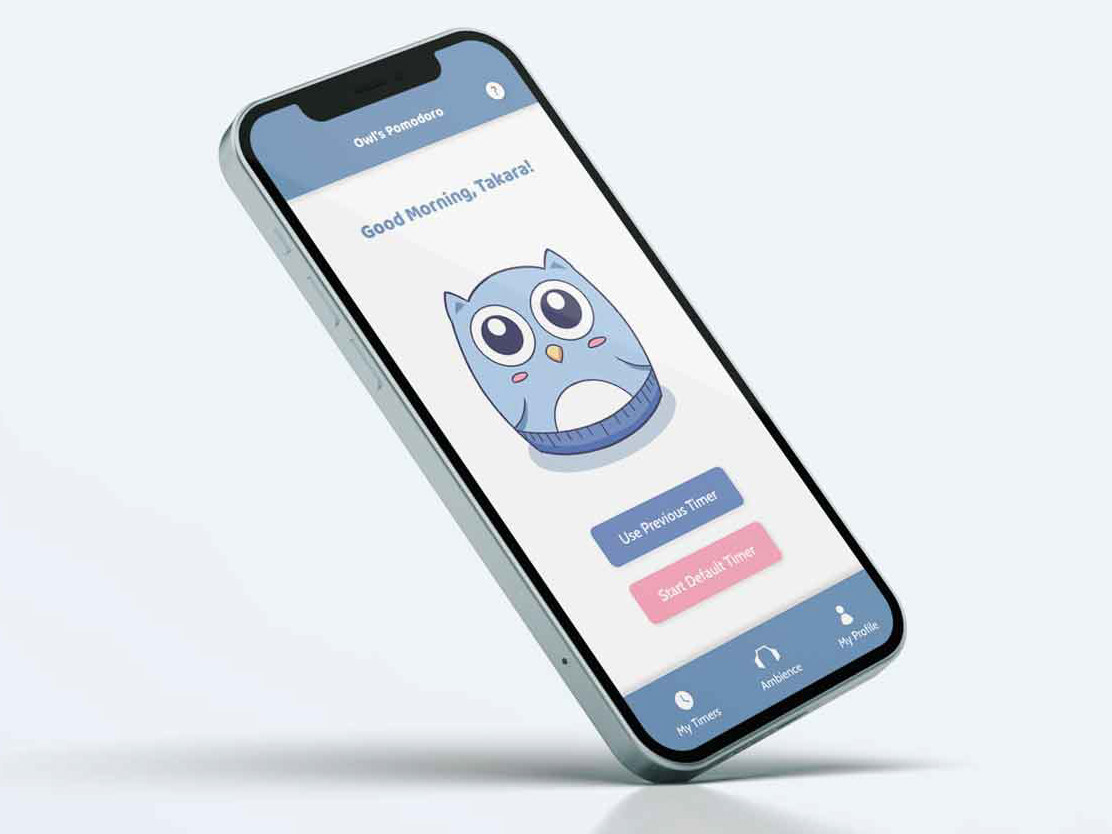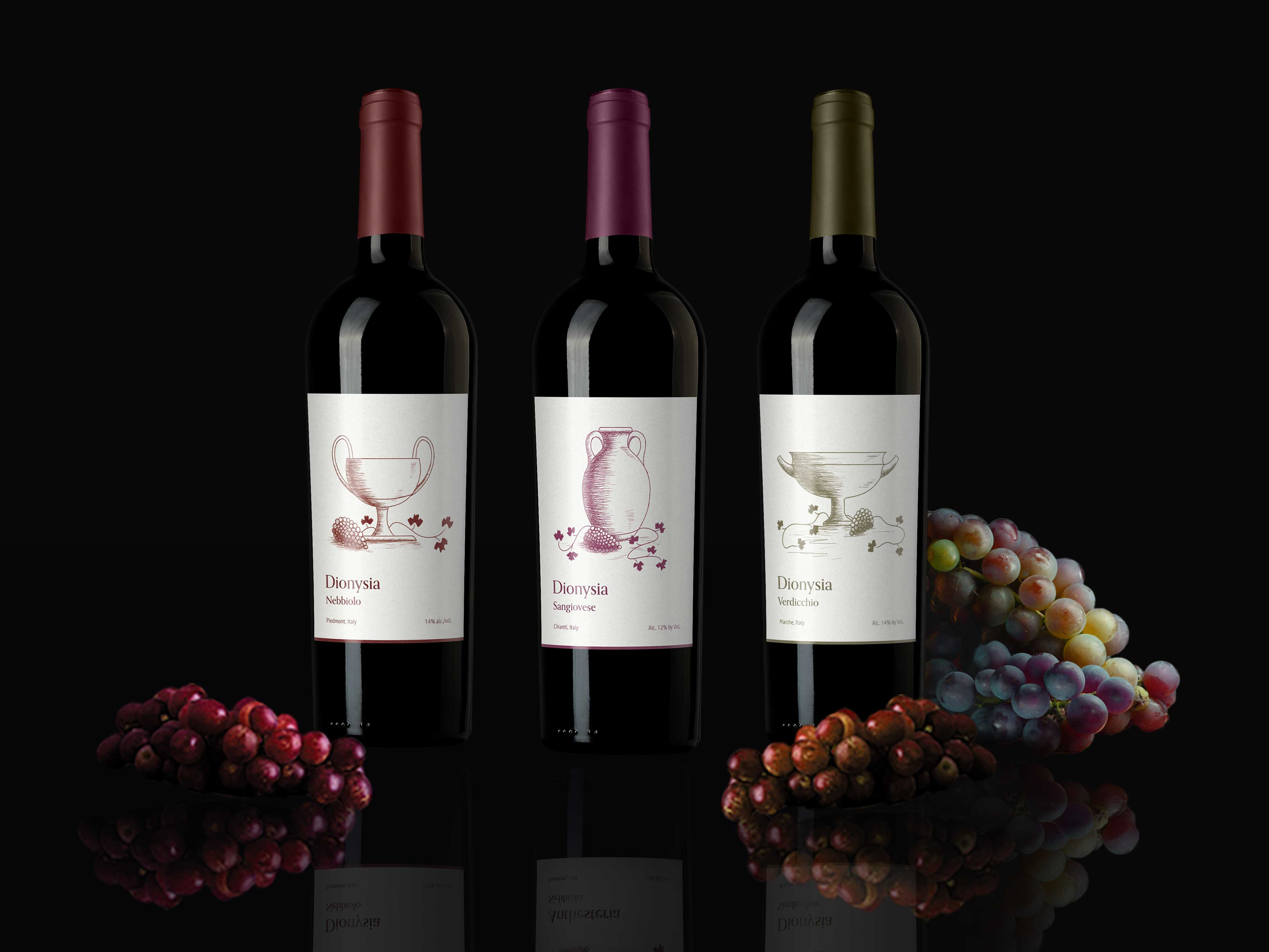Project Synopsis
During the beginning of the Covid pandemic, the internet was overwhelmed with information about the new virus. Not all the information was accurate, and older adults (aged 50 - 60) with less digital literacy tended to believe inaccurate reports and cures for the virus. To combat this issue, the Fake News Campaign was created to educate and give this group tools to critically evaluate news found online.
Mockup from Unblast
Process Work
1. Research
I started this project by looking into secondary research that focused on the influence of fake news, social media, and its effects on the perception of Covid-19. Most people tend to look for credible sources to inform their opinions on the new virus, but they are still vulnerable to inaccurate information spread on social media. 16% of people use social media as their primary source for Covid-related news (D'Amore, 2020).
In 2020, information about Covid was rapidly changing based on new findings. This made it difficult for the public to stay up-to-date with the latest research. People may see their loved ones sharing inaccurate or outdated information on social media. Others may rely on someone whom they perceive to be more knowledgeable to inform their own opinions about Covid-19 (Limaye et al., 2020).
Credible sources during the start of the pandemic didn't always have all the answers the public was demanding from them, resulting in frustration and uncertainty. Fake news sources used this opportunity to generate articles that would attract as many readers as possible to gain easy profit (Fleming, 2020). Additionally, very few news sources at the beginning of the pandemic were backed by reliable credentials. Individuals who did research during that time would have likely consumed unreliable information (Cuan-Baltazar, Muñoz-Perez, Robledo-Vega, Pérez-Zepeda, & Soto-Vega, 2020).
Generally speaking, there were two extreme reactions to news reported by social media. Some people reacted dramatically while others downplayed the severity of the news. People generally did not stop to critically evaluate the accuracy of news articles before sharing the information with their peers. This is exasperated in individuals who do not have a scientific background and rely on their instinct to determine the accuracy of information presented to them. Existing beliefs and heightened emotional states can further influence the likelihood of someone sharing news articles online (Pennycook, Mcphetres, Zhang, Lu, & Rand, 2020).
During my research, I came across the SIFT method, an acronym created to help students critically evaluate information and research they come across online. SIFT stands for:
Stop
Investigate the source
Find trusted coverage
Trace back to the original
(Fake news and information literacy: The sift method)
Finally, I interviewed people within my social circle to see how (and if) they evaluate news they come across on social media. In general, I found older adults (50 - 60 years old) were less critical of the news they came across and had a tendency to place full trust in the people who shared articles with them.
2. Visual Direction
Illustrations and typography take on a "vintage" style to stand out to the target audience. Each deliverable features a popular false Covid claim alongside one letter from the SIFT acronym that invites viewers to critically evaluate the content they consume online.
To keep the deliverables from being hostile towards the target audience, there is less emphasis on debunking popular Covid myths. The primary focus is introducing the public to tools they can use to protect themselves and their loved ones from false/dangerous health claims.
The vintage style is contrasted with modern technology that is used to perpetuate false information.
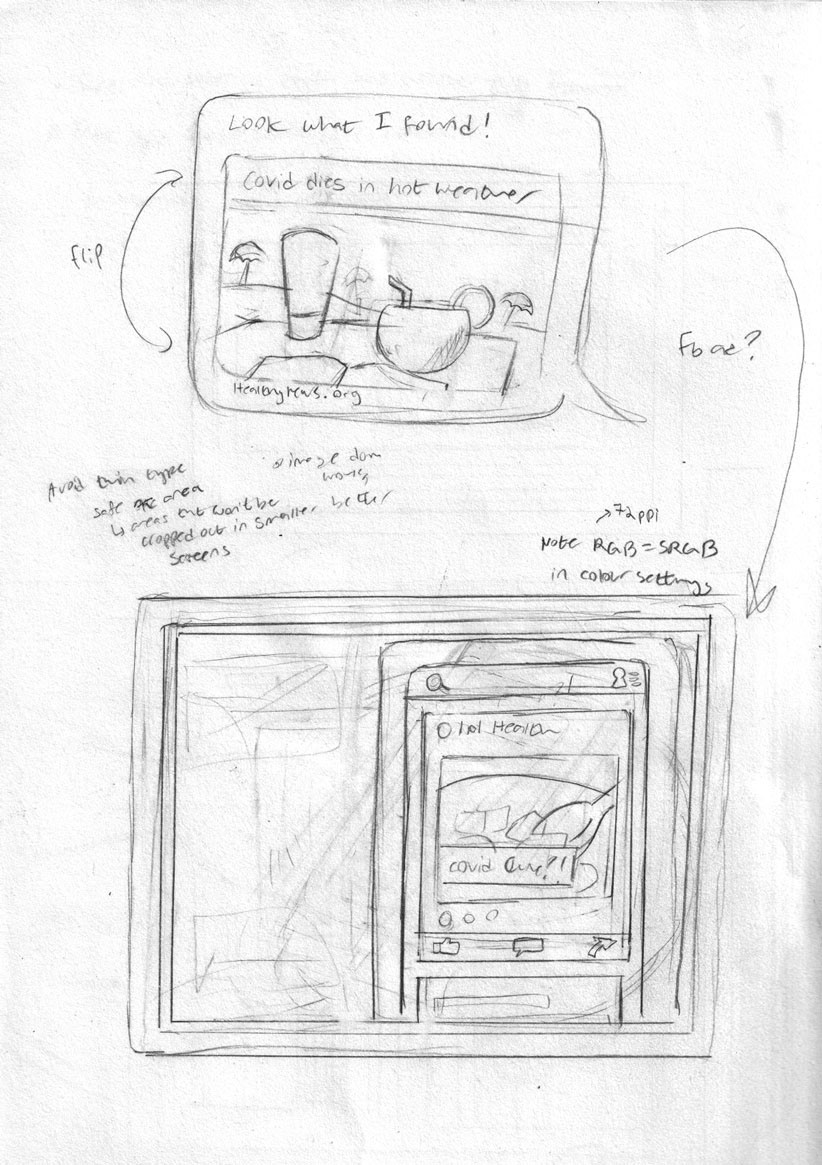
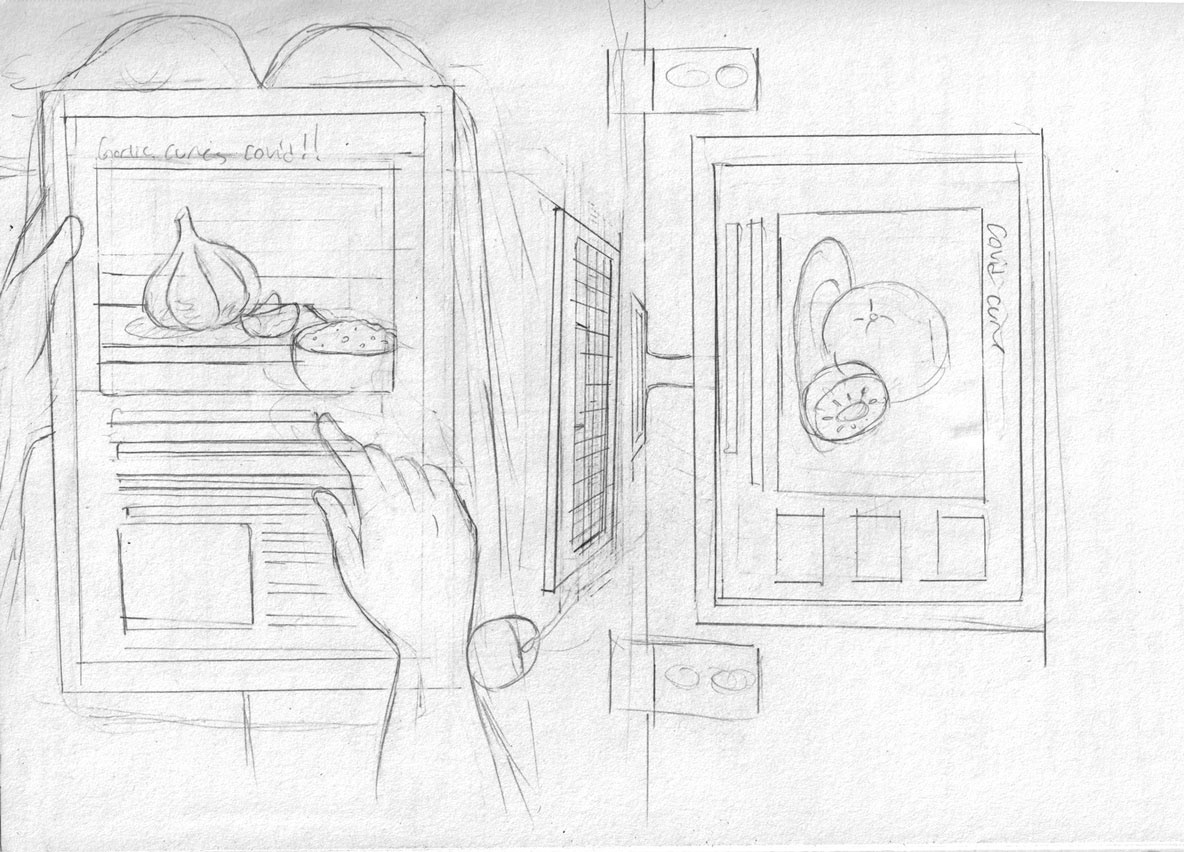
Citations
Cuan-Baltazar, J. Y., Muñoz-Perez, M. J., Robledo-Vega, C., Pérez-Zepeda, M. F., & Soto-Vega, E. (2020). Misinformation of COVID-19 on the Internet: Infodemiology Study. JMIR Public Health and Surveillance, 6(2). doi:10.2196/18444
D’Amore, R. (2020, August 04). Coronavirus misinformation is spreading - what is Canada doing about it? Retrieved September 08, 2020, from https://globalnews.ca/news/7249102/coronavirus-canada-misinformation-strategy/
Fake news and information literacy: The sift method. Research Guides. (n.d.). Retrieved September 5, 2022, from https://researchguides.uoregon.edu/fakenews/sift
Fleming, N. (2020, June 17). Coronavirus misinformation, and how scientists can help to fight it. Retrieved September 08, 2020, from https://www.nature.com/articles/d41586-020-01834-3
Limaye, R. J., Sauer, M., Ali, J., Bernstein, J., Wahl, B., Barnhill, A., & Labrique, A. (2020). Building trust while influencing online COVID-19 content in the social media world. The Lancet Digital Health, 2(6). doi:10.1016/s2589-7500(20)30084-4
Pennycook, G., Mcphetres, J., Zhang, Y., Lu, J. G., & Rand, D. G. (2020). Fighting COVID-19 Misinformation on Social Media: Experimental Evidence for a Scalable Accuracy-Nudge Intervention. Psychological Science, 31(7), 770-780. doi:10.1177/0956797620939054
